I have posted this in the past without pictures so I was going through the pictures on my computer and thought I would add the pictures to the text for a tutorial on making a seamless florentine cutaway joint.
What we are trying to achieve
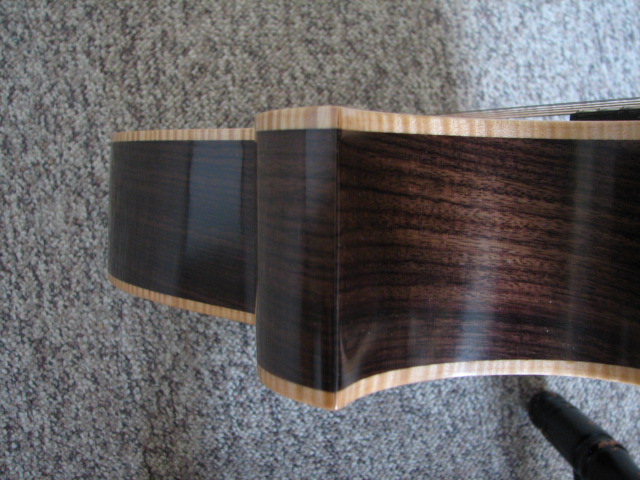
Some terms I'll use before we start.
"Cut away long side" the long side piece running from the tail to the tip of the cutaway.
"Cut away short side" the other side.
It's basically like doing any corner miter with binding, only your doing it with the side piece. You want to make this joint first, before you attach the head and tail blocks.
Start with the inside block, shaped to the profiles of the curves of both side pieces, you should lay this out on paper (cause we all know that the wood acts just like a paper layout right)
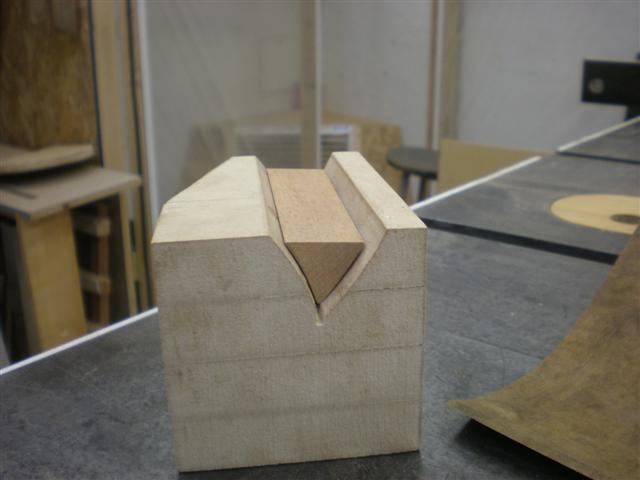
Now, take the cutaway long side place it in the mold with the waist located correctly and mark out where the tip of the cutaway is going to be on the inside of the side. Now I take the cutaway short side and sit it on top of the tip of the cutaway to help layout the miter angle, make a mark on the outside of the long side where the top of the cutaway will be. Use your square and draw a line down the side. Now you have two lines on the side, one inside and one outside. You can join these lines across the thickness to get an idea of the angle of the miter. You all with me so far?
Sorry, no pictures of these steps.
Next I take the long side to the sander (I use my thickness sander as I don't have an edge or belt sander) and sand in a rough angle, close to the miter angle for the cutaway. Check the inside and outside lines often as you don't want to sand through one, just close to them both.
So once you have this rough angle sanded to the long side, do the same with the short side.
Once the short side is roughed in, check the sides and inside block to your paper layout. Now you can start refining the angles getting them just right. Like any of the miters on the guitar, you want to go slow and take a little of at a time to make sure you don't have a Homer moment (Doh!) and trim to far. It's always easier to take off the material, it's much harder to put it back without anyone noticing.

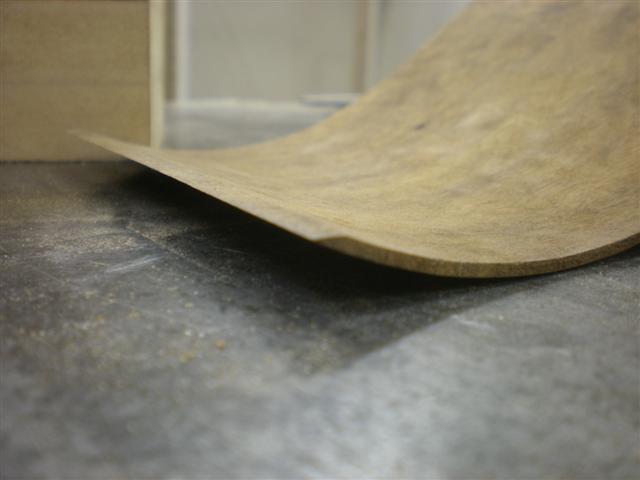
When you have the miter where you like it, you want to glue up both pieces to the inside block all at once. Here is a clamping caul I made based on a picture off Jim Olson's website, Bruce Dickey also has one in the jig's tools and technique's section.
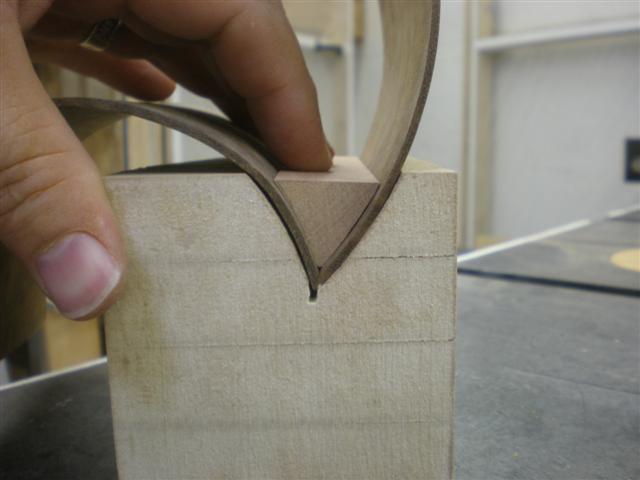
Check and refine before you glue of course. Use some wax paper between the clamping caul and the sides.
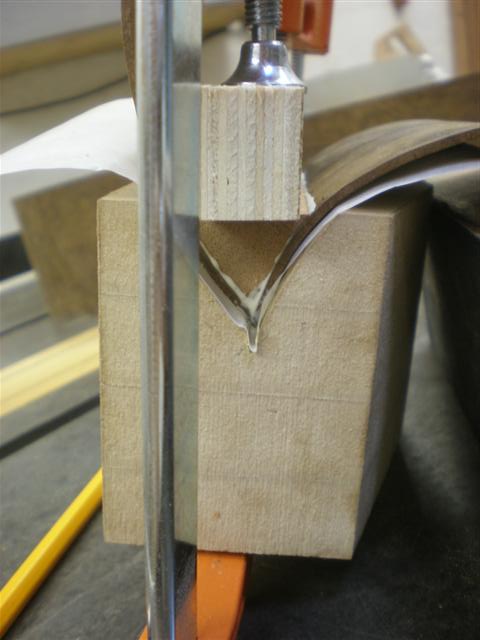
Than you should have a nice clean joint once the glue has set up. As I said, gaps in rosewood joints hide very well with sawdust and CA, so don't worry to much about gaps, of course you want as few as possible.
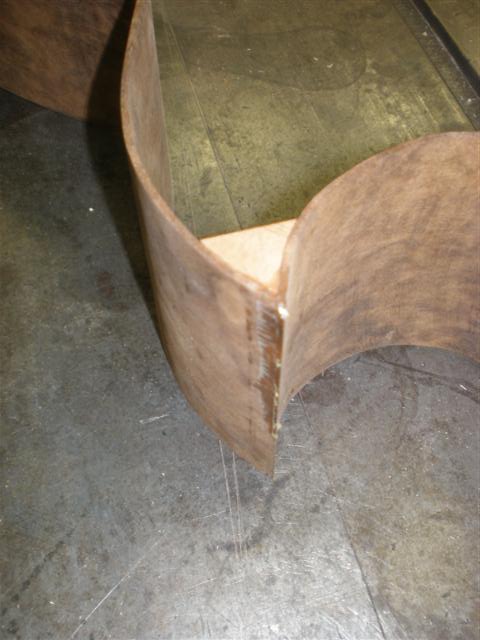
Now you can touch up the short side on the pipe if you need to, but if you've bent the pieces to your paper layout, you should not need to.
Now your ready to glue in the tail and head block as well as the other side.
When the body is all assembled, take a piece of steel round bar and run it along the point of the florentine. This will close up any small little gaps and help give that seamless appearence.
Few.... I hope I haven't scared any of you away trying this out. It sure is rewarding when it turns out.
Remember, if it doesn't turn out, you can always bind the tip of the cutaway.





